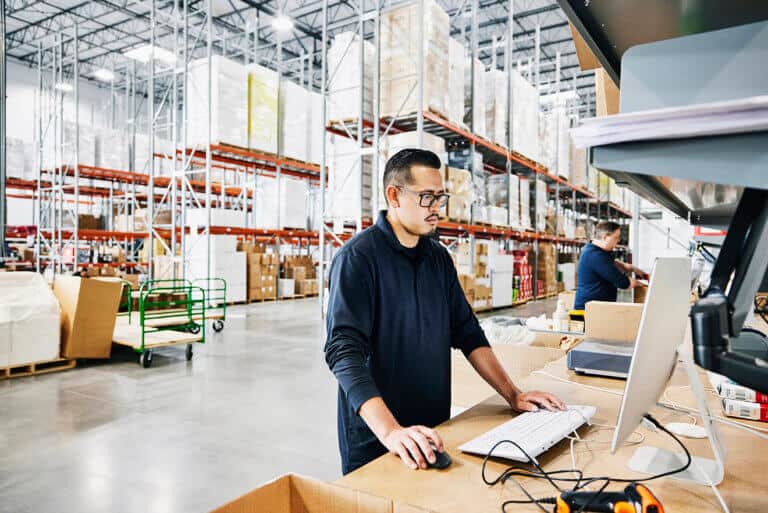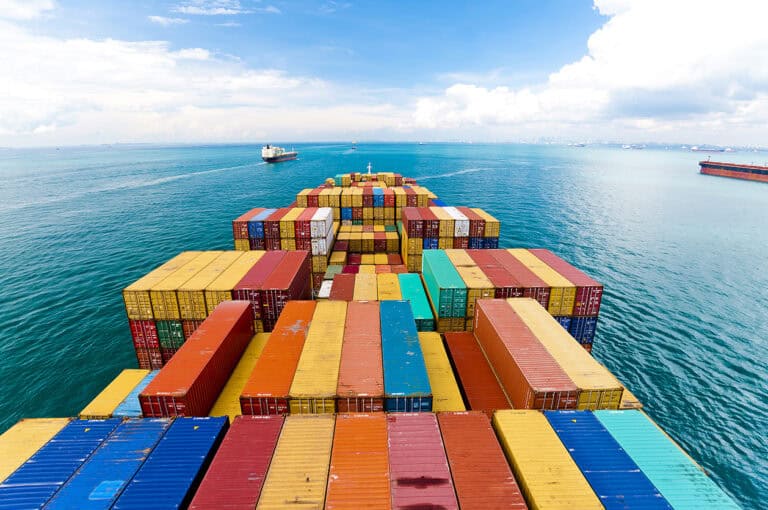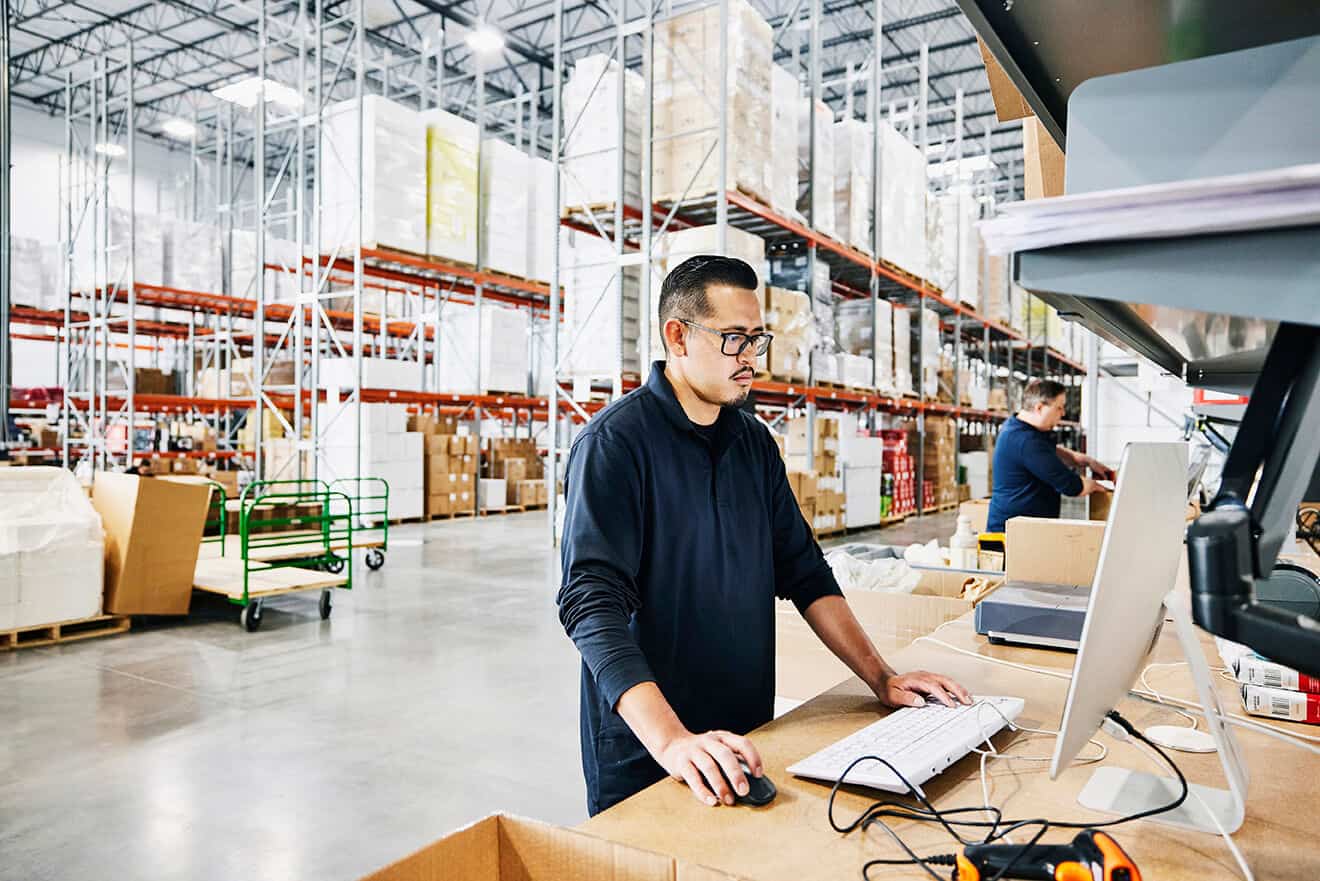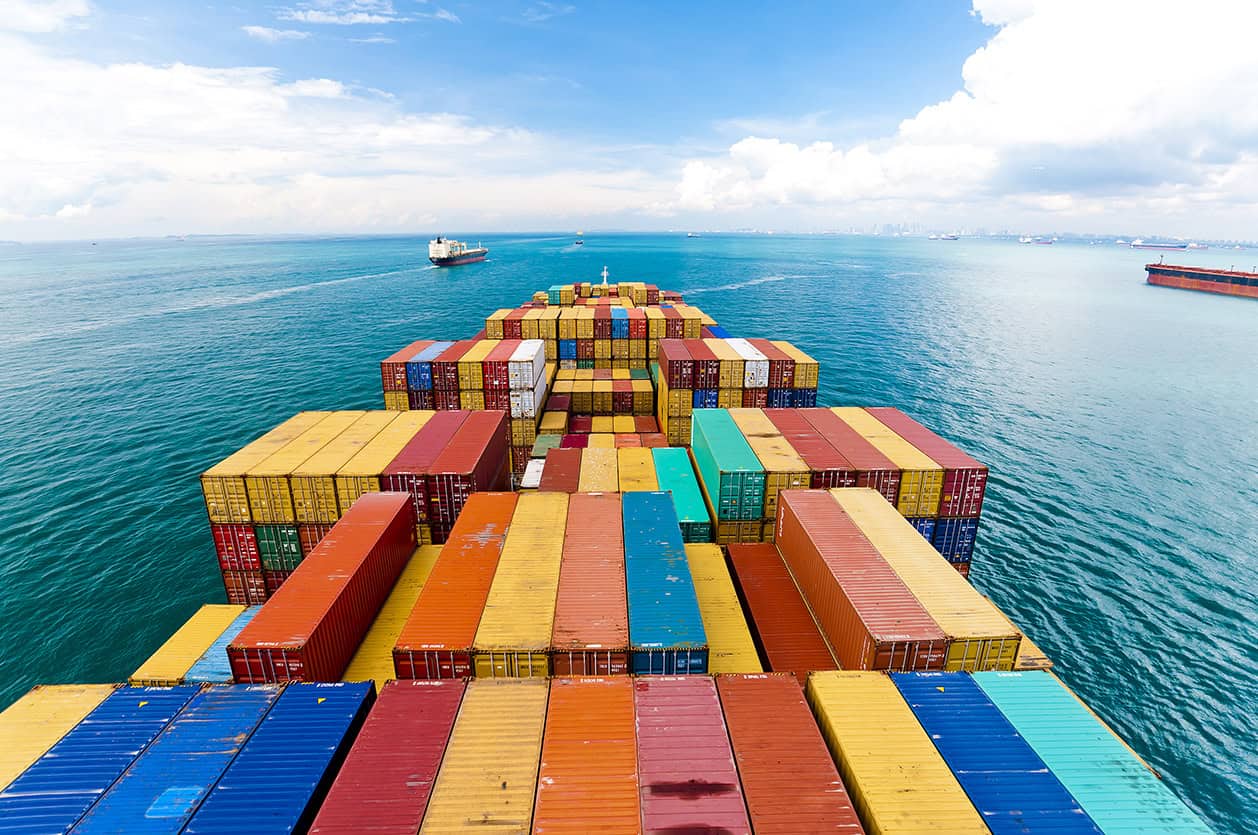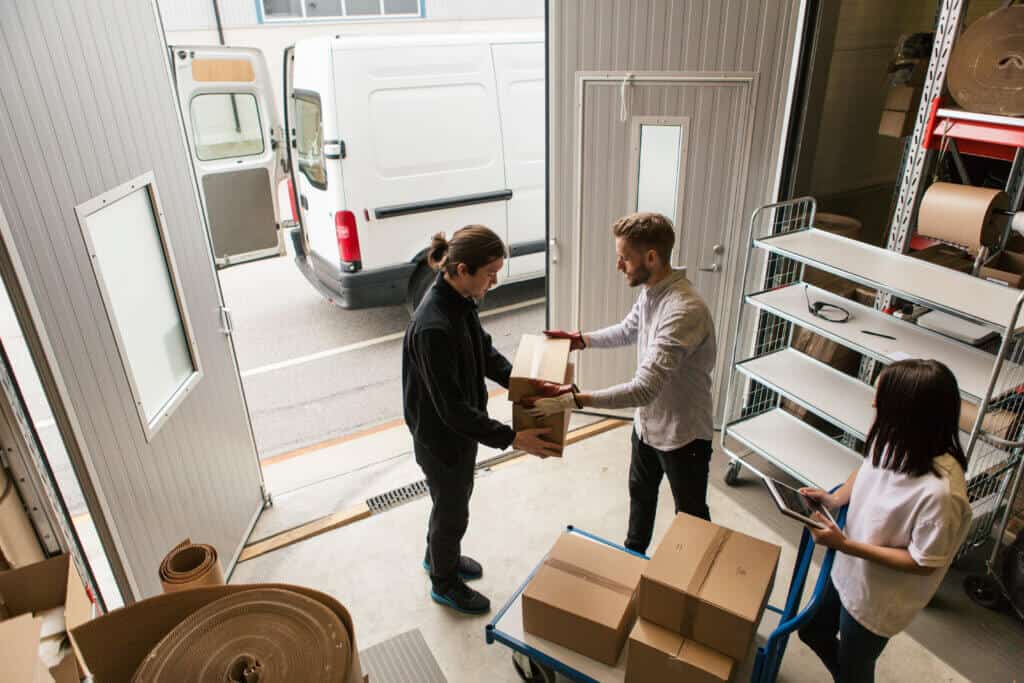
For retailers and producers of consumer packaged goods (CPG), transportation management software is the lifeblood of their business. It’s how they navigate the complex, step-by-step process of moving their products from the manufacturing phase into the hands of their end customers. Like everything else in the supply chain world, logistics have become much more complex – and that is due to the changing behaviors and habits of consumers.
Imagine this: it’s 1980, and you are taking your family on a camping trip. You’ve already got a shopping list of stuff you’ll need to buy before you go: a family-sized tent, a cooler, some perishables, some nonperishables, a good pair of hiking boots, a little beer and wine, and a rain-proof anorak. You hop in your car intent on getting everything marked off your list, but it’s 1980, so you will probably need to make multiple stops because there aren’t many options for shops that sell all these products in one place. Your shopping “trip” could feasibly take an entire weekend.
Now flash forward to 2024. In minutes, all these items can be purchased and shipped to you, within days, and you may not even have to get off your sofa to do it. Welcome to the modern world of multichannel retail: an array of distribution and purchasing options including direct sales, indirect distributors, resellers, online sales, and retail trading partners. This variety allows consumers to buy products and services however (online, in-store, and direct-to-consumer) and in whatever time frame suits their needs or whims.
Just four decades on from our retro camping trip, the multichannel retail model has not only transformed the marketplace, but it’s also altered customer expectations. Smartphones, online shopping, and a massively evolved transportation and logistics ecosystem have turned shopping into an experience that doesn’t rely on physical brick-and-mortar storefronts, or even geography. It also demands near-immediate gratification. While these same developments have created exciting new opportunities for companies in the retail and consumer packaged goods (CPG) industries, they’ve also created a whole new set of issues.
Challenges faced by multichannel retailers and CPG companies
This new multichannel retail model has made logistics management exponentially more complex, particularly when combined with external variables beyond companies’ control. Inflation compounds these issues, driving up costs for manufacturers and distributors alike. Here are four of the biggest logistics challenges faced by CPG and retail companies today.
Meeting evolving consumer trends
Naturally, retailers and consumer packaged goods (CPG) companies are eager to tap into these expanded markets but must be able to keep up with changed expectations. For instance, in 1980, our camping family probably would have walked out of various shops with products in hand, but in 2024, it’s a different story. Modern consumers are much more likely to shop online to avoid having to spend their Saturday driving from store to store. Their buying habits are influenced primarily by convenience, speed of delivery, and a wider range of channel options.
It’s not enough for consumers to simply get the product they want from a brand they like – it must fit seamlessly into their busy lives and arrive quickly and in good condition. To keep up with these demands, businesses must rely on their logistics partners to be an integral part of achieving customer satisfaction. Logistics solutions that can help monitor shipment visibility and share updates with customers also contribute to a more positive experience.
Responding to uncontrollable events
The world is a big, unpredictable place filled with geopolitical conflicts, extreme weather events, and industrial accidents. While most of these variables are well beyond the control of companies, their potential to create large-scale disruptions for global supply chains is frustratingly high.
Conflicts between nations can alter the entire global shipping landscape, as we’ve seen in the Red Sea. Although the geographic area affected is relatively small, up to 12% of global trade passes through it. When Yemen-based Houthi rebels began attacking cargo ships with weaponized drones, they forced shipping companies to re-route entire fleets around the southern tip of Africa, adding 11,0000 miles (17,702 km) and 10 – 14 days to their voyage, resulting in the need for extra fuel and drastically affecting delivery times.
If you’d like to gain unique insights into supply chain movements globally, check out the e2open Ocean Shipping Index.
Extreme weather events can have an equally serious impact on shipping or transportation operations. Some of these events are powerful enough to endanger laborers or vessels or destroy necessary infrastructure such as power grids, bridges, and roads. And, of course, industrial accidents like the one we witnessed in the Suez Canal in 2021 can have a ripple effect that is felt throughout the entire global economy and result in billions of dollars in lost trade.
Preparing for seasonality
Whether it’s the beginning of summer, a national holiday, or the back-to-school period, peak season is a profitable but demanding time for CPG and retailers. While not quite as disruptive as a war or a blocked shipping canal, these seasonal events can still have businesses scrambling to ensure customer demands are met on-time, in-full (OTIF).
While the arrival of these peak seasons can be predicted, the spike in traffic combined with fluctuating demand can create headaches for logistics operators. It’s important to ensure that companies have booked shipping containers ahead of time and made the proper arrangements for “last minute” delivery fulfillment. If consumer demand is unusually high, they will also need to quickly find logistics partners to fulfill all those orders and ensure customer satisfaction is not affected.
A lack of visibility into logistics operations of external supply chain partners
Visibility into the logistics operations of external supply chain partners is challenging for several reasons. In many cases, the ecosystems that support them are fragmented and siloed due to outdated technology and processes, and lack of standardization. Different logistics partners often use disparate or manual systems to manage their operations, and may not be compatible with one another, leading to data silos where information is trapped within individual systems. To avoid reporting delays, errors, and blind spots with their shipments, retailers and CPG companies need access to a comprehensive network of logistics providers to build better coordination, visibility, flexibility, and quickly onboard new partners.
Companies need more visibility and control – not less – to increase the resiliency of their supply chains and keep customers happy. For instance, say a specific product is trapped in an area where a monsoon has flooded a major roadway, keeping the delivery truck from reaching port. Meanwhile, you’re awaiting a shipment of this CPG product to send to retailers, or if you are a retailer, to restock your shelves. You will need to be notified of the delay, so you’ll have time to explore other options. However, without visibility into the status of that shipment, your business could suffer a setback of days or even weeks
So how do we deal with all this volatility?
The solution: connected transportation management software
As consumers increasingly shop across various channels, CPG and retail companies must adapt their commercial operating models to strike a delicate balance: on one hand, they must cater to both consumer trends and seasonality; on the other, inventory management, order fulfillment (despite uncontrollable events), and improved visibility of shipments. To address these challenges, companies need to adopt a strategic logistics approach that leverages advanced technology and a customer-centric culture.
Increased resiliency and flexibility
Companies are under constant pressure to deliver goods on time and at a lower cost. However, a host of variables such as rising fuel costs, limited capacity, and volatile consumer demand can reduce the efficiency of your logistics operations. Companies must also contend with the increased transportation demands of peak seasons and the unexpected rise of uncontrollable events. During these periods of uncertainty, you need visibility into open capacity, competitive rates, and logistics partner performance metrics.
A robust partner network can help mitigate these complexities. The e2net Open Partner Network is the world’s largest business network, featuring access to 50,000 carriers across all transit modes and strong partnerships with digital freight brokerages. With the e2open carrier network, companies can identify, vet, and contract reliable carrier options 24 hours a day, 7 days a week, and ensure that customer satisfaction remains high.
Better data for better visibility
Logistics resiliency relies heavily on the frictionless, two-way flow of information. Our connected transportation management software leverages data from the e2open network to identify areas where carriers are experiencing issues and identify the best course of action to avoid OTIF (on-time in-full) fines, detention costs, and increased carrier rates. Say you’re moving goods from China to the Philippines, but a typhoon forces you to reroute. With data from the e2open network, you can immediately see optimal routes and identify any carriers that can help pick up the slack.
The ideal TMS also connects all supply networks to gather data about works-in-progress (WIP) and inputs and outputs to ensure OTIF is met with reduced risk and lower cost. With harmonized, decision-grade data and access to a vast network of carriers and suppliers, you can proactively manage capacity, find reliable carrier options, and avoid potential fines by being OTIF.
Leveraging advanced technology platforms
While our 80’sfamily may have been focused on “keeping up with the Joneses,” companies in 2024 need to keep up with their competitors by leveraging the technology available to them. There has been a fundamental shift in how supply chains are designed and managed, mainly in response to the growing volatility of the global marketplace. Technology has made our supply chains more resilient, more agile, and more strategic than they have ever been before. A connected transportation management software solution supported by a cloud-based platform can help companies overcome some of their most complex logistics challenges. E2open’s end-to-end supply chain platform connects logistics operations with essential visibility into inbound supply and production tracking data to ensure your CPG or retail business will meet customer expectations.
A connected TMS from e2open is the way forward
From planning and route optimization to increased capacity and visibility, leveraging our connected TMS can help you overcome the most common obstacles of the consumer goods and retail supply chain. Our logistics management tools can help you do more than just keep up with customer demand – they can help you uncover opportunities to decrease costs and risks while also supporting your growth strategy.
While seasonality is predictable, the way the markets react to these milestones is anything but. During these periods, scalability is crucial to adapt to supply and demand fluctuations. And even in the face of uncontrollable events, our TMS can help your company mitigate risks and develop contingency plans for disruptions by providing alternate routes and modes of transportation to minimize delays.
Evolving buyer habits can be tough to predict and react to, especially with technology driving many of these changes. In addition to having multiple ways to purchase products, consumers also have multiple ways to learn about new brands and styles they would not have been exposed to previously. The playing field for consumer attention span has become incredibly competitive, so how we offer our products and how we get them in our customers’ hands is more important than ever.
At the end of the day, what all companies want is to be able to offer a consistent brand experience that delights customers. Unlike our campers from the ’80s our customers don’t have to inconvenience themselves anymore. They can buy virtually everything they need, at any time, from wherever they are standing (or sitting). With connected transportation management software from e2open, companies can deliver on those promises.
If you’d like to learn more about e2open’s logistics management solutions, connect with us today or visit e2open.com.
